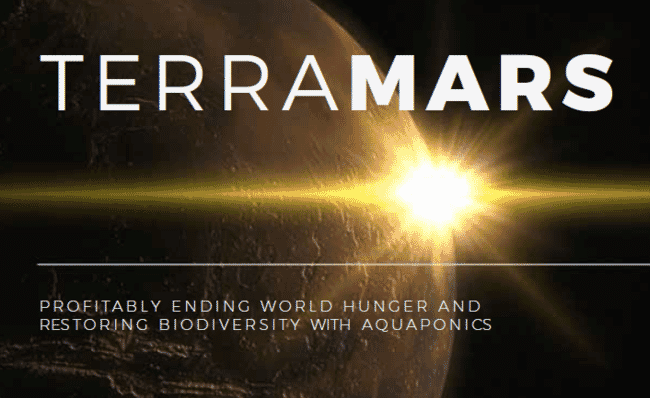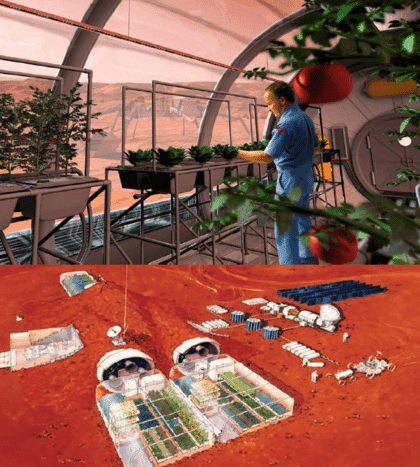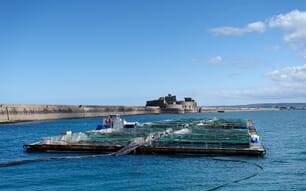
Can you tell us a bit about your aquaculture experience?
My aquaculture experience is primarily with saltwater salmon production on the east and west coast of Vancouver Island, in Canada. I gained hands-on experience immediately after graduation from McGill University with a degree in marine biology. This was in the mid-1980s and the issues we had with fish loss due to bacterial kidney disease at the time lead me to pursue a masters and then a PhD at UBC, focused on the effects of rearing and environmental fish stressors on their immune systems and disease susceptibility.

Why did you decide to return to the sector and what inspired you to look into aquaponics specifically?
I returned to the sector after owning and operating a national licensing, sales and distribution in Canada focused on providing human tissue regeneration products to dental and medical specialists across Canada for 15 years. I returned as I had always intended to do so and had gone to the biotech sector to support my family and to learn business lessons that I could then bring back to the aquaculture / aquaponics sector. My first love is “all things marine” and it’s great to be back in a sector where I feel at home.
The reason for migrating a short step from aquaculture to aquaponics is that I feel aquaponics is more holistic in that a well-conceived aquaponic system can essentially be near-closed and self-sustaining. Aquaponics systems today do need external input in the form of fish feed which then provides carbon, nitrogen and phosphorous (and other trace elements) for plant growth. The next step in closing the loop will be to produce fish feed from the carbon, nitrogen and phosphorous delivered from the system in the form of human food, fish offal and the inedible stem and root plant products.
From aquaponics, to aquaponics on Mars, that sounds like quite a leap. What's the logic?
The simple premise behind developing an aquaponic system for use on Mars [as part of the Terra-Mars project] is that a system advanced enough to be on Mars will be able to grow food anywhere on Earth, with modifications. The ultimate goal is to have a system that can provide food security for any environment on Earth and thereby end the suffering that still occurs in some developing countries. Having the ambitious goal of developing a food production system for Mars should provide ample PR exposure which can then be leveraged to promote the project and help to carry it forward.
It must be noted that the initial systems will be produced on a small scale and will be developed to produce high value fish for the ornamental aquarium fish sector and high value plants for the fine dining and floral industries. The technologies developed for these high valued products will later be used for larger projects which will produce higher volume, lower value products for middle class consumers. Eventually we will transition to industrial scale operations for low price, mass consumption products. This model is borrowed from the automotive industry, as demonstrated and proven by Tesla motors.
What species of fish are you thinking of growing in your system on Mars?
The three species of fish we've shortlisted to date for Mars are tilapia, barramundi and Arctic char. We'll need to test many species under the simulated Earth environment that we'll attempt to create in our simulated Martian environment.
Are you able to apply the skills that you gained in the conventional aquaculture sector for the project?
Yes, many of the skills gained in the conventional aquaculture sector (especially related to fish health and nutrition) can certainly be used with this project.
Who are your key collaborators and what do they bring to the project?
The key collaborator for this project is Dr James Rakocy, known worldwide as the “father of aquaponics”. Dr Rakocy has had a distinguished 30 year career at the University of the Virgin Islands and his UVI aquaponic system is known worldwide as the best researched and established system for growing tilapia and a variety of greens including lettuces and herbs. Dr Rakocy is the author of the seminal book Aquaponic Q&A. His educational aquaponic systems are used in over 1,100 high schools across America for foundational teaching in the STEM areas of biology, chemistry, math and food systems.
Other key collaborators are Garth Wardell, CEO / owner of Allsite IT, a digital intelligence firm currently dedicated to the advancement of intense data solutions for hospitality and healthcare sectors. Garth is very keen about this project and has been a trusted advisor since 2018. Several other advisors in the areas of law, engineering, computer science, multimedia technologies, education, urban farming and accounting are also on standby and eager to begin work on this project.
The other noteworthy collaborator is Dr Christopher McKay, astrobiologist at the NASA Ames research centre in California, who has offered assistance at the academic level and must sit as an unpaid advisor, as is mandated for all full-time NASA employees.
How have your plans been received to date?
The plans have been very well received to date, most notably by Elon Musk who was informed of the intentions several years ago and stated that “this will be very important down the road”. Mr Musk was presented the concept for informational uses only and was not approached for funding or resources, as he had intense funding and resource requirements at Tesla and SpaceX at the time.

How much money are you hoping to raise for the project and what will you use this for?
The initial round of financing for this project will be for $2.6 million and will be used to:
- Develop a first aquaponic system prototype.
- Secure an IP patent portfolio of aquaponic patents.
- Build a physical model of the Space Exploration Theme park
- Develop a mixed reality (VR&AR) tour of the park
- Perform an extensive feasibility study for the project.
What are the key milestones for your project?
- Obtain the initial round of seed funding.
- Become cash-flow positive with the acquisition of existing ancillary businesses in the fish, vegetable and floral, growth, packaging, distribution, retail, media and entertainment sectors.
- Building global brand recognition for Terra-mars products and entertainment facilities.
- Acquisition of real estate (primarily distressed suburban shopping malls) where the aquaponic facilities will be installed to grow the fish and plants for local distribution to populations in North America and Europe.
- Series A financing round to raise $100 million in 2023 or 2024 at the latest.
What is the end goal for your project and do you think that this is feasible to achieve in your own lifetime?
The end goal for phase one of the project is to have four Space / Mars exploration theme parks - one in North America, one in Europe, one in MENA and one in China. These will have the dual purpose of entertainment and providing research facilities for Mars colonisation technologies, featuring the aquaponic food production system. Other technologies for Mars colonisation will be in the in the fields of transportation, communications, housing, healthcare and recreation.
If you don’t make it to Mars, where will you target using your aquaponics systems on the Earth?
If we don’t make it to Mars, the aquaponic system will first be used to produce high value fish and plants for Western markets and eventually be developed in for larger commercial operations to be used anywhere on earth.
What are the major challenges that you still need to overcome?
The major challenges which we need to overcome are to raise the initial round of financing and to become cashflow positive in the shortest time possible.

